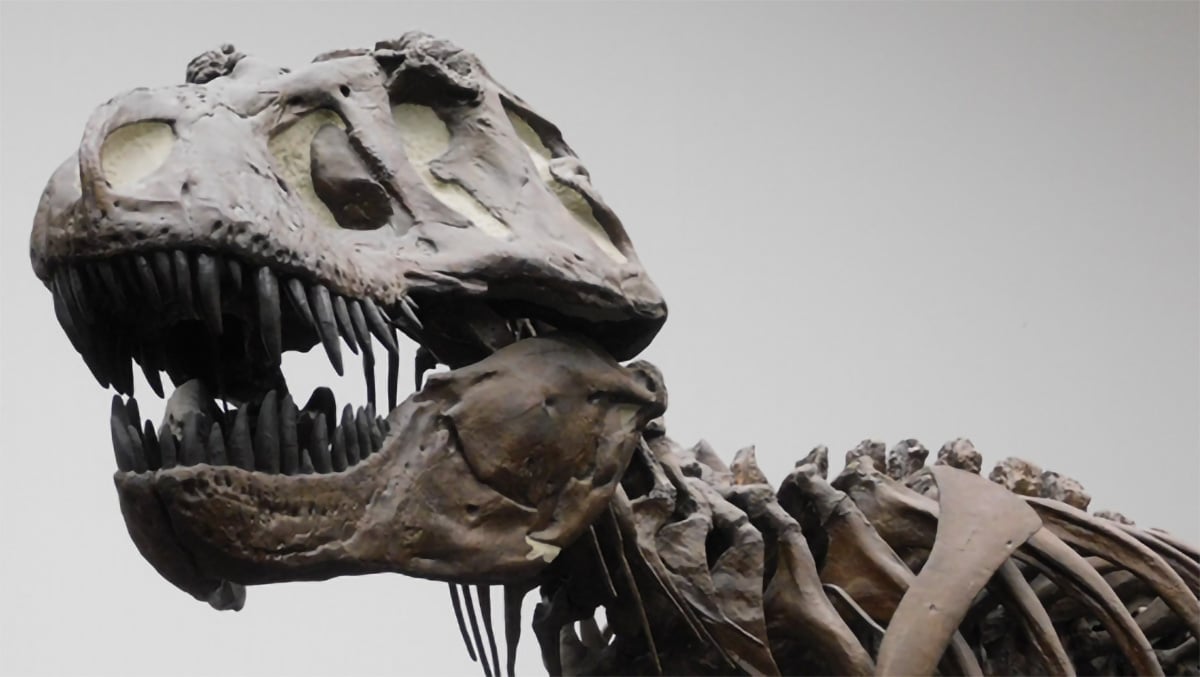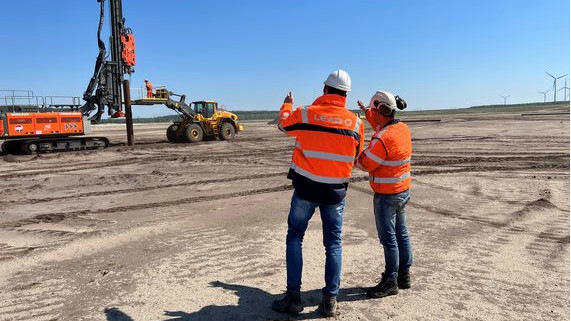It is still a wasteland that looks like a lunar landscape. But in a few years, a huge lake will be created here. We are talking about the former Jänschwalde open-pit mine, just ten kilometers east of Cottbus. But even before that, Berlin project developer EP News Energies (EPNE) is building a large solar system here on behalf of LEAG, which is supposed to float on the lake.
marine technology
EPNE uses new technology for this. Because it anchors the so-called dolphins. These are piles driven into the ground, which actually come from bridge construction and shipping. Among other things, piers are installed on dolphins, which must flexibly adjust to the water level. In shipping, they are used for docking. To do this, dolphins crash into the sea or harbor bottom. At Cottbuser Ostsee, the module fields are installed on 15-meter dolphins, which are anchored in compacted open-pit soil. “The Cottbuser Ostsee is also a landmark from the point of view of project development,” confirms Dominique Guillou, Managing Director of EPNE. “The system is built on a dry lake bottom and then floats as the water level rises. This is unique so far and the reason for the innovative anchoring system.”
Want to stay up to date on the energy transition? Then simply subscribe to the free newsletter of ERNEUERBARE ENERGIEN – Germany’s largest independent association magazine for renewable energies!
The advantage of this method is a low-maintenance installation due to fewer anchors and the elimination of a large number of anchor chains, which must be reset as the water level rises and falls. EPNE connects approximately 1,900 floating objects with 34 dolphins, on which about 51,000 solar modules are installed.
Increased performance
Guillou explains that the facility must fit well into the overall picture of the lake and also be consistent with tourist use. “We have attached great importance to this during planning. After two years of intense planning and very good collaboration with all stakeholders, we are pleased that the implementation phase has now begun.” So, with 16 hectares, less than one percent of the water surface in the future will be used for photovoltaics. Because the lake must eventually be covered Approximately 1,900 hectares.In the course of project development, LEAG and EPNE have been able to increase the production of the floating solar system from the previously planned 21 to 29 MW.This increases the projected annual electricity production to 29,000 MWh.
energy conservation area
In fact, the lake and the facility are part of Lusatia’s structural change strategy. On the other hand, the region, in which coal power generation has played a central role until now, can create prospects after phasing out coal. On the other hand, it could continue to be a center of energy production in East Germany – only with renewable energies. “The largest floating solar system in Germany on the largest lake after mining symbolizes the future use of the region’s unique potential for this region. This project is an established part of our gigawatt plant conversion project, with which we want to turn Lusatia into an ecological powerhouse, ”says Thorsten Kramer, Managing Director of LEAG.
The starting point for more projects
The plant should be a launching pad for other renewable projects in the area around the lake, he says. “With a combination of floating photovoltaic, wind power and lake thermal power, the Baltic Sea Cottbus has become a model region for sustainable energy supply,” says Kramer, explaining the goal. “We dare something new. And that together in the region. Cottbus/Chopuz thus remains an energy city and Lusatia remains a top-level and future-oriented energy region. This is a pound of structural change, needs and will receive a safe, stable and green supply of energy, “adds Cottbus Mayor Tobias Schick.
Removing regulatory hurdles
Indeed, there is still plenty of room here for many green power plants – both for photovoltaics and for wind energy. In addition, there is the existing infrastructure, designed for large power plants that can also absorb electricity. Fraunhofer ISE has confirmed that areas in post-mining lakes in former coalfields have a huge potential for PV energy utilization of up to 2.74 GW, even taking into account parallel aspects of utilization. “However, investment incentives must be created through innovation bids, since investment costs for floating solar systems are higher than for conventional land-mounted photovoltaic systems,” warn those involved in the project. “With regulatory hurdles removed and exposed mining lakes designated as EEG conversion zones, the technology can make a significant contribution to the federal government’s development goals.” (see below)

“Certified tv guru. Reader. Professional writer. Avid introvert. Extreme pop culture buff.”






More Stories
AI Startup: Here are eight startup ideas
Di Giannantonio (Ducati): “Crazy with technology” / Motorcycles
Huasun offers 0BB heterojunction solar modules with modern zero busbar technology